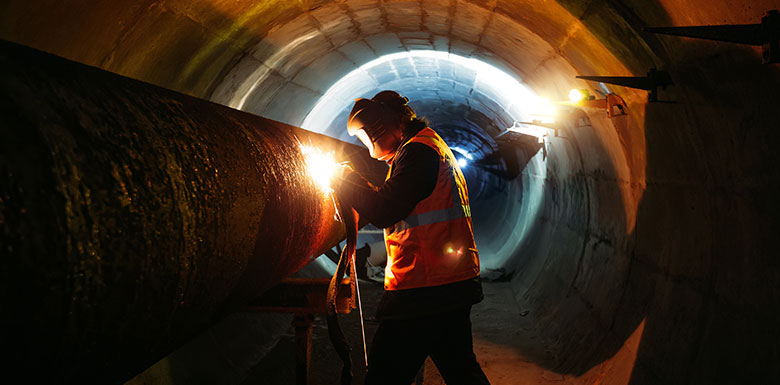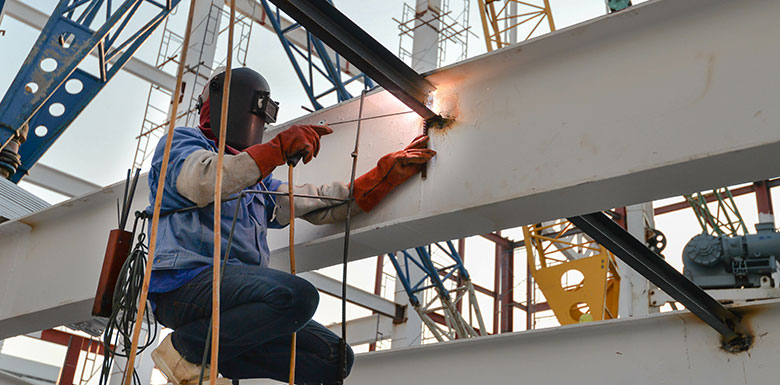Welding Accidents in New York City
Welding is a skilled and indispensable trade that plays a crucial role in the NYC construction and manufacturing industries. However, it is also one of the most hazardous. According to the Bureau of Labor Statistics (BLS), there are over 500,000 welders in the United States, and welding-related injuries contribute to a significant portion of workplace accidents each year. In New York City alone, where construction projects are continuous and expansive, welding injuries are unfortunately common.
The Risks of Welding in New York City
Welding accidents in NYC occur frequently due to exposure to dangerous chemicals, burns from molten metal, and falls from elevated workspaces. Despite strict safety standards for welding and New York Labor Laws, negligence, lack of training, and inadequate personal protective equipment (PPE) remain common causes of accidents, with burns, electrical shocks, and toxic fume exposure leading the list of injuries.
The challenges of NYC’s dense construction environment further amplify the risks for welders, who often work in cramped, poorly ventilated spaces and at dangerous heights. In 2023, the NYC Department of Buildings reported over 1,000 construction site injuries, many tied to welding. Understanding New York’s strict liability laws, such as Labor Law Sections 240 and 241(6), is critical for injured workers seeking compensation. Consulting an experienced NYC welding accident lawyer can help protect your rights and secure the compensation you deserve.
The Common Causes of NY Welding Accidents
Welding accidents often stem from preventable hazards, many of which are the result of negligence. When employers, contractors, or other parties fail to follow safety protocols, provide adequate training, or maintain equipment, they put welders at unnecessary risk of severe injuries.
Below are the most frequent causes of welding accidents seen by our NY welding injury attorneys. They highlight the daily dangers NYC welders face and the importance of accountability.
Lack of Proper Protective Equipment
Welders depend on personal protective equipment (PPE) such as helmets, gloves, fire-resistant clothing, and respirators to shield themselves from burns, fumes, and ultraviolet radiation. When employers fail to supply high-quality or well-maintained PPE, workers face elevated risks of injury.
Example: A welder using a helmet with a cracked visor may develop “welder’s flash” from UV radiation, leading to painful corneal burns and temporary vision loss. Similarly, insufficient gloves can result in severe burns from hot metals.
Exposure to Toxic Fumes
Welding produces hazardous fumes and gases, including manganese, carbon monoxide, and ozone. Prolonged exposure, especially in poorly ventilated areas, can lead to chronic respiratory illnesses, neurological disorders, or long-term health complications.
Example: A welder working in a confined space without exhaust ventilation could inhale toxic fumes, increasing the risk of developing “manganism,” a neurological disorder resembling Parkinson’s disease.
Electric Shock
Electric shock is a leading cause of fatalities in arc welding, often resulting from contact with live wires or improperly grounded equipment. Secondary shocks can also occur, potentially leading to falls from elevated workstations.
Example: A welder operating an arc welding machine without insulated gloves or while standing on a wet surface could suffer a severe electric shock, causing life-threatening injuries or incapacitation.
Fires & Explosions
The intense heat and sparks from welding can easily ignite flammable materials on a construction site. Explosions may also occur if gas cylinders or other volatile substances are improperly stored or handled.
Example: A welder using a torch near unsecured gas cylinders could inadvertently ignite leaking gas, causing a fire or explosion that results in burns and structural damage.
Improper Training & Supervision
Inadequately trained welders are more likely to mishandle equipment, overlook safety protocols, or fail to recognize potential hazards. Proper supervision is critical to maintaining safe work environments and preventing accidents.
Example: An inexperienced welder incorrectly setting the pressure on a gas welding torch could cause a backfire, leading to an explosion that endangers nearby workers.
Equipment Malfunctions
Faulty or poorly maintained welding equipment, such as damaged cables, malfunctioning torches, or defective shutoff switches, increases the likelihood of accidents. Employers are responsible for regular inspections and maintenance.
Example: A welding machine with a defective shutoff switch might continue emitting sparks after use, potentially igniting surrounding materials or causing burns to the operator.
Typical Welding Injuries
As you can see, welding accidents often result in severe and life-altering injuries. These injuries impact a welder’s physical well-being and can lead to significant emotional and financial hardships. Below are the most common injuries welders face:
- Severe Burns – Welding involves working with extreme heat, molten metal, and sparks, which can easily cause first- to third-degree burns. These injuries often require extensive medical treatment, including skin grafts and long-term rehabilitation.
- Respiratory Issues – Welding generates harmful fumes containing toxic substances such as manganese, chromium, and carbon monoxide. Prolonged exposure, particularly in poorly ventilated areas, can lead to chronic respiratory conditions like occupational asthma, chronic obstructive pulmonary disease (COPD), or even lung cancer.
- Eye Injuries – Eye protection is critical in welding, as exposure to ultraviolet (UV) and infrared radiation can cause “welder’s flash,” a painful condition involving corneal burns. Without adequate shielding, welders risk permanent vision impairment or blindness.
- Electrical Injuries – Welders frequently use high-voltage equipment, making electric shock a common hazard. Direct contact with live wires or improperly grounded tools can result in nerve damage, cardiac complications, or fatal electrocution.
- Hearing Damage – Welding often exposes workers to sustained noise levels above 85 decibels from grinding, cutting, and welding operations. Prolonged exposure without proper ear protection can lead to hearing loss or tinnitus (persistent ringing in the ears).
- Injuries from Falls or Falling Objects – Welders working on elevated platforms or near unstable materials are at risk of falls or being struck by falling objects. These incidents can lead to fractures, spinal injuries, or traumatic brain injuries.
Welders facing these injuries often require extensive medical care, rehab, and financial support to recover and return to work. Consulting an experienced welding accident lawyer can help injured workers secure compensation for medical bills, lost wages, and long-term care needs.
Safety Regulations for NYC Welders

OSHA and New York Labor Law mandate strict safety standards to protect welders from harm. Key regulations include: Despite these protections, negligence and non-compliance frequently lead to preventable injuries on NYC worksites.
- OSHA Standard 29 C.F.R. 1910.252: Employers must ensure proper ventilation to minimize exposure to harmful fumes and gases like manganese, carbon monoxide, and nitrogen oxides. In enclosed or confined spaces, mechanical ventilation or air-purifying respirators are mandatory.
- OSHA Standard 1910.335: Electrical protective equipment, such as insulated gloves and voltage-rated tools, must be inspected regularly. Damaged equipment must be immediately repaired or replaced to prevent electrical shocks.
- OSHA Standard 1910.132: Employers are responsible for providing personal protective equipment (PPE) tailored to welding hazards, including helmets, gloves, flame-resistant clothing, and respiratory protection.
New York Industrial Code §23-1.25 sets additional safety requirements specific to welding operations in the state:
- Eye Protection: Welders must be provided with approved safety goggles or helmets that protect against infrared and ultraviolet radiation to prevent injuries like “welder’s flash.”
- Flame-Resistant Apparel: Employers must supply flame-resistant clothing to reduce the risk of burns caused by sparks or molten metal.
- Safe Scaffolding: Appropriate scaffolding must be installed and maintained for elevated welding work to prevent falls.
What to Do After a NY Welding Accident
Taking immediate action is critical to protecting your rights and building a strong case for compensation. Here’s what to do after a welding accident in New York City:
- Seek Medical Attention – Your health should always be the priority. Even if your injuries seem minor, seek medical care immediately to ensure proper treatment and to document your injuries. Medical records play a crucial role in linking your injuries to the accident, which is essential for workers’ comp and personal injury claims.
- Report the Accident – Notify your employer or supervisor about the accident as soon as possible. Failing to report a workplace injury within 30 days in New York can jeopardize your workers’ compensation claim.
- Gather Evidence – Collect as much information as possible about the accident. Take photos of the accident scene, defective equipment, safety violations, and injuries. If there were witnesses, ask for their contact information and statements.
- Document Expenses – Keep track of all accident-related costs, including medical bills, transportation to medical appointments, and lost wages. This information will help calculate the full extent of your damages when pursuing compensation.
- Consult an Experienced Welding Accident Attorney – An experienced NYC welding accident lawyer can evaluate your case, identify liable parties, and guide you through the legal process to secure maximum compensation.
Tell Us What Happened
"*" indicates required fields


